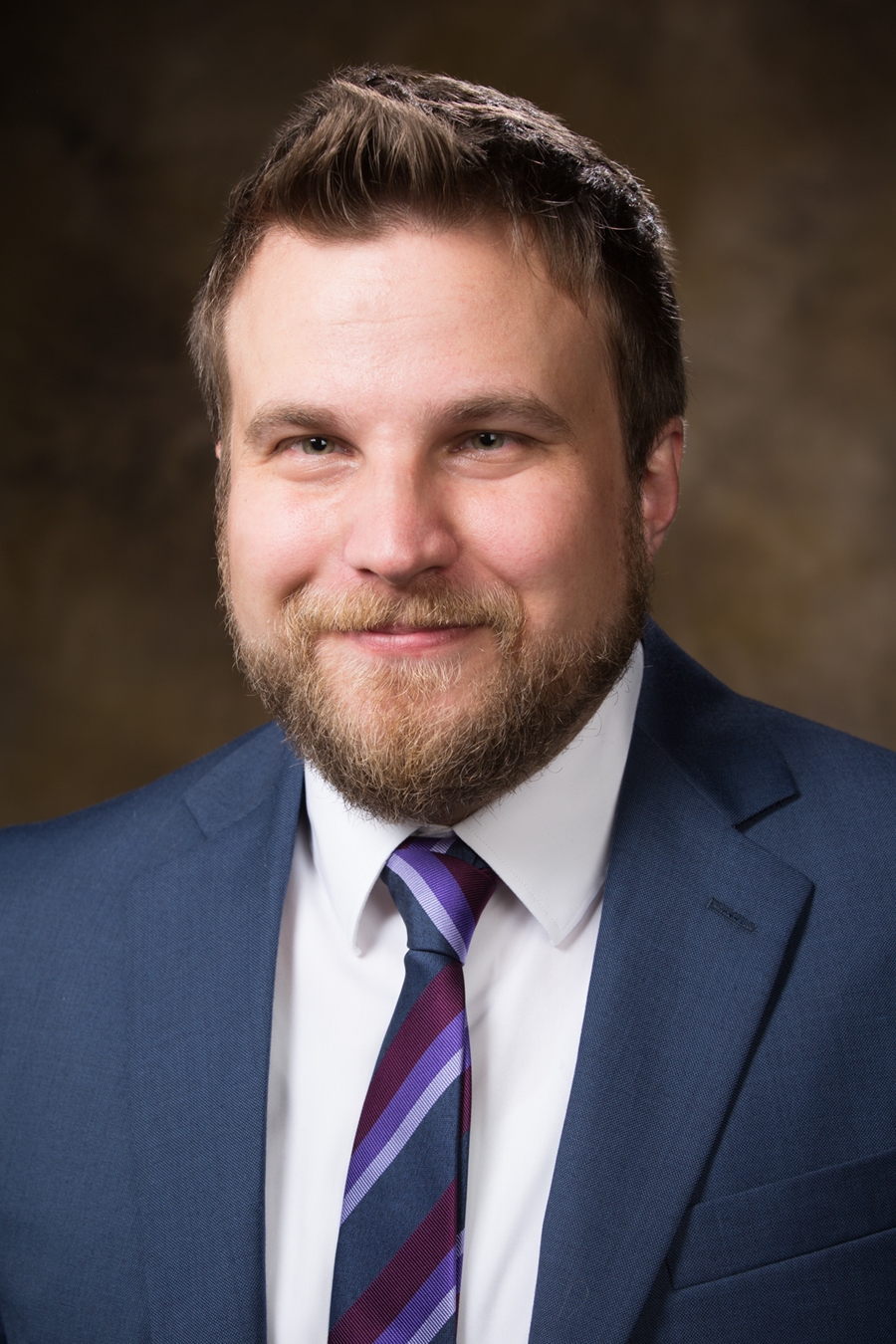New Study Shows Tissue Healing Response Following a Heart Attack
FAYETTEVILLE, Ark. – In the weeks following a heart attack, the injured heart wall acquires more collagen fibers that are significantly less stiff due to a lack of fiber crosslinks, according to a new study by a University of Arkansas researcher and his colleagues at Tufts University. The changes to the cardiac tissue may lead to excessive scar formation and ultimately heart failure.
The discovery was made by a team that included Kyle Quinn, assistant professor of biomedical engineering at the U of A, and Irene Georgakoudi and Lauren Black, associate professors of biomedical engineering Tufts. Their findings were published in Nature Publishing Group's Scientific Reports.
Using multiphoton microscopy, a powerful imaging technique, the researchers examined changes in composition and mechanical properties of the heart wall in the weeks following a heart attack. Through a process of tissue decellularization, they studied the fiborous load-bearing microstructure around cardiac cells and found that following a heart attack the newly-forming scar tissue was made up of collagen fibers that were thinner, less naturally fluorescent, and more aligned than in healthy tissue. These fiber properties measured with multiphoton microscopy were associated with a poor mechanical response compared to healthy cardiac tissue.
"With multiphoton microscopy, we can visualize both collagen fiber organization and crosslinking status," Quinn said. "Clearly, after a heart attack, the extra-cellular matrix was less stiff due to the deposition of new collagen fibers that lacked crosslinks."
The ability to predict the mechanical environment of the heart wall through these imaging techniques may help researchers understand how scarring, after a heart attack can ultimately lead to heart failure, Quinn said. Quinn will continue working on the quantitative imaging methods to understand the relationship between the structure and mechanical function of biological tissues. His goal is to apply these methods to problems with skin and wound healing.
"Our skin shares many similar characteristics with the heart in its healing response following an ischemic injury," Quinn said.
Topics
Contacts
Kyle Quinn, assistant professor
Department of Biomedical Engineering
479-575-5364,
kpquinn@uark.edu
Matt McGowan, science and research communications officer
University Relations
479-575-4246,
dmcgowa@uark.edu
Headlines
Fay Jones School Faculty Projects Recognized With 2024 Architectural Education Awards
Professors John Folan, Candice Adams and Emily Baker were each a part of teams that received 2024 Collaborative Practice Awards from the Association of Collegiate Schools of Architectuure.
2024 UARK Jazz Festival Hosts Series of Performances April 16-19
Hosted by the Department of Music, the festival will feature some of the region’s finest jazz and classical musicians and feature special guest artist Angel “Papo” Vázquez.
Engineering Students Spend 'Alternative Spring Break' Touring Missouri Companies
Nearly two dozen College of Engineering students visited a group of Missouri employers as part of Alternative Spring Break, a three-day tour helping employers with recruitment and students with future careers.
Outstanding Alums, Students Recognized by Crop, Soil and Environmental Sciences
Mike Phillips, Edgar Mersiovsky, Robert Rorie and Jody Davis were honored at the annual Department of Crop, Soil and Environmental Sciences Spring Awards Banquet, along with several students.
Heather Sprandel Recognized as March 2024 Cordes Chair by TFSC
Heather Sprandel, instructor of management in the Sam M. Walton College of Business, was honored by the Wally Cordes Teaching and Faculty Support Center as the March 2024 Wally Cordes Chair.





